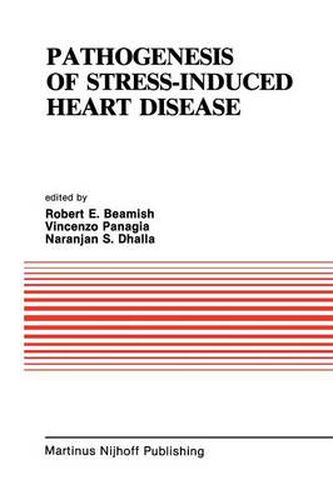Readings Newsletter
Become a Readings Member to make your shopping experience even easier.
Sign in or sign up for free!
You’re not far away from qualifying for FREE standard shipping within Australia
You’ve qualified for FREE standard shipping within Australia
The cart is loading…






This title is printed to order. This book may have been self-published. If so, we cannot guarantee the quality of the content. In the main most books will have gone through the editing process however some may not. We therefore suggest that you be aware of this before ordering this book. If in doubt check either the author or publisher’s details as we are unable to accept any returns unless they are faulty. Please contact us if you have any questions.
A recent comprehensive study of stress and human health by the Institute of Medicine/National Academy of Sciences concludes that individuals who experience any of a wide range of stressful events or situations are at increased risk of developing a physical or mental disorder, including heart disease. Since cardiovascular disease continues to be a leading cause of illness and death, and since the etiology and pathogenesis of several of the commonest forms of heart disease are incompletely known, it is of fundamental impor tance to study the potential role of stress in the genesis of heart disease. Accordingly an International Symposium on Stress and Heart Disease was held in Winnipeg, Canada, June 26-29, 1984 and the proceedings form the basis of this book and its companion volume, Stress and Heart Disease . The connection between stress (the behavioral sciences) and heart disease (the biomedical sciences) occurs in the mechanisms through which the brain affects or controls the endocrine and the autonomic nervous systems. Initially this linkage appeared to be relatively simple, mainly involving catecholamines and corticosteroids, and communication between nerve cells was thought to be electrical. Now knowledge has increased and concepts have change dramatic ally. Major advances have occurred in biochemical, anatomical, physiological, pharmacological, pathological and behavioral aspects of the neuroendocrine system. The over whelming significance of chemical communication in the nli xviii nervous system has become clear.
$9.00 standard shipping within Australia
FREE standard shipping within Australia for orders over $100.00
Express & International shipping calculated at checkout
This title is printed to order. This book may have been self-published. If so, we cannot guarantee the quality of the content. In the main most books will have gone through the editing process however some may not. We therefore suggest that you be aware of this before ordering this book. If in doubt check either the author or publisher’s details as we are unable to accept any returns unless they are faulty. Please contact us if you have any questions.
A recent comprehensive study of stress and human health by the Institute of Medicine/National Academy of Sciences concludes that individuals who experience any of a wide range of stressful events or situations are at increased risk of developing a physical or mental disorder, including heart disease. Since cardiovascular disease continues to be a leading cause of illness and death, and since the etiology and pathogenesis of several of the commonest forms of heart disease are incompletely known, it is of fundamental impor tance to study the potential role of stress in the genesis of heart disease. Accordingly an International Symposium on Stress and Heart Disease was held in Winnipeg, Canada, June 26-29, 1984 and the proceedings form the basis of this book and its companion volume, Stress and Heart Disease . The connection between stress (the behavioral sciences) and heart disease (the biomedical sciences) occurs in the mechanisms through which the brain affects or controls the endocrine and the autonomic nervous systems. Initially this linkage appeared to be relatively simple, mainly involving catecholamines and corticosteroids, and communication between nerve cells was thought to be electrical. Now knowledge has increased and concepts have change dramatic ally. Major advances have occurred in biochemical, anatomical, physiological, pharmacological, pathological and behavioral aspects of the neuroendocrine system. The over whelming significance of chemical communication in the nli xviii nervous system has become clear.